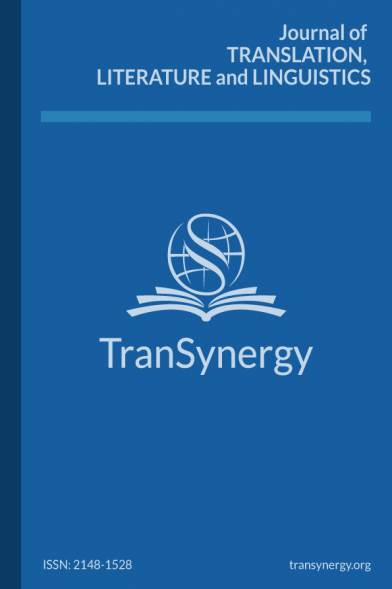“Homeless at the Seashore”: Trauma in Refugee Narrative, Sea Prayer, by Khaled Hosseini
Key words: Trauma, nostalgia, displacement, refugee narrative, Sea Prayer
“Homeless at the Seashore”: Trauma in Refugee Narrative, Sea Prayer, by Khaled Hosseini
Key words: Trauma, nostalgia, displacement, refugee narrative, Sea Prayer,
___
References
Babu, A. (2021). Sea prayer: An illustrated literary narration on the afflictions of refugees.
Smart Moves Journal (IJELLH), 9(10), 43-48.
Bağlama, S. H. (2020). A Postcolonial approach to contemporary refugee literature:
Benjamin Zephaniah’s Refugee Boy” TRTakademi. 6(10), 630-642.
Bakara, H. (2020). Introduction: Refugee literatures. JNT: Journal of Narrative
Theory, 50(3), 289-296.
Balaev, M. (2018). Traumatic Studies. In D. H. Richter (Ed.), A companion to literary theory,
(pp. 360-371). John and Wiley & Sons Ltd.
Bhabha, H. (1994). The location of culture. Routledge
Büyükgebiz, M. (2023). Invisible travellers: Child refugee identities in Alan
Gratz’s Refugee novel. Kültür Araştırmaları Dergisi, 17, 13-24.
DOI:10.46250/kulturder.1268581
Boym, S. (2001). The future of nostalgia. Basic Books.
Caruth, C. (1996). Unclaimed experience: Trauma, narrative and history. JH Univ. Press.
Çameli, M. M. (2023). The Theatrical representations of traumatized psyche:
Beside herself, the striker and crave. Nobel.
Gallien, C. (2018). Refugee literature: What Postcolonial Theory has to say.
Journal of Postcolonial Writing, 54(6), 721-726.
He, N. (2021). The prayer of refugee children. Advances in Literary Study, 9, 73- 83.
https://doi.org/10.4236/als.2021.92009
Hornby, A. S. (1978). Oxford advanced learner’s dictionary of current English. Oxford
University Press.
Hosseini, K. (2018). Sea Prayer. Riverhead Books.
Kadavan, A. S. (2021). Journey to death: Fictionalizing the Syrian Refugee crisis in
Khaled Hosseini’s Sea Prayer”. International Journal of English and
Comparative Literary Studies, 2(5), 1-11.
Oulwan, E. T. A. (2021). Displacement as a traumatic experience in Susan
Abulhawa’s Mornings in Jenin (2010) and Khaled Hosseini’s Sea Prayer
(2018). Occasional Papers, 76, 29-49.
Said, E. (1999). Out of place: A memoir. Random House.
Salmose, N. (2018). A past that has never been present’: The literary experience of
childhood and nostalgia. Text Matters, 8(8), 332-351.
Sedikides, C., Wildsehut, T., Arndt, J., and Routledge, C. (2008). Nostalgia: Past, present,
and future. Current Directions in Psychological Science, 17(5), 304-307.
Shoukat, L., Waheed, S., Arshad, K. (2021). An analysis of personal and collective trauma in
Khaled Hosseini’s Novel Sea Prayer. JEE (Journal of English Education), 6(2), 177-
130. https://doi.org/10.30606/jee.V6i2.457
- ISSN: 2979-9503
- Yayın Aralığı: Yılda 2 Sayı
- Başlangıç: 19.12.2022
